Abstract
Onchocerciasis or river blindness, a major cause of irreversible blindness among adults, has been the focus of international disease control efforts for over 20 years in West Africa. This paper employs the international classification of impairment, disability and handicap (ICIDH) to interpret results from a field study to assess the socioeconomic consequences of onchocerciasis in Guinea in 1987. In a sample of 136 blind, 94 visually impaired and 89 well-sighted persons, decreasing visual acuity is strongly associated with mobility, occupational and marital handicaps. Individual, household and disease correlates were explored. The implications of these findings for the ICIDH concept of handicap are discussed with particular emphasis on the need to extend analysis beyond the individual when assessing the socioeconomic consequences of disabling disease.
Full text
PDF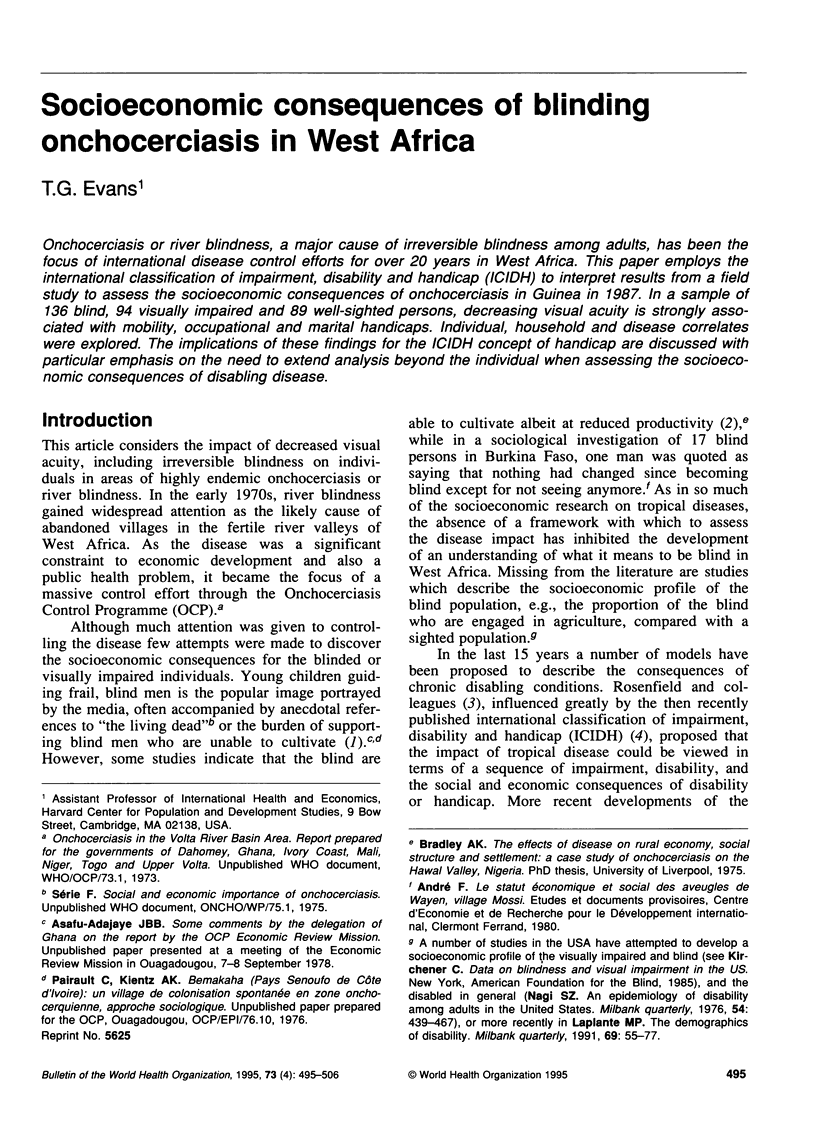

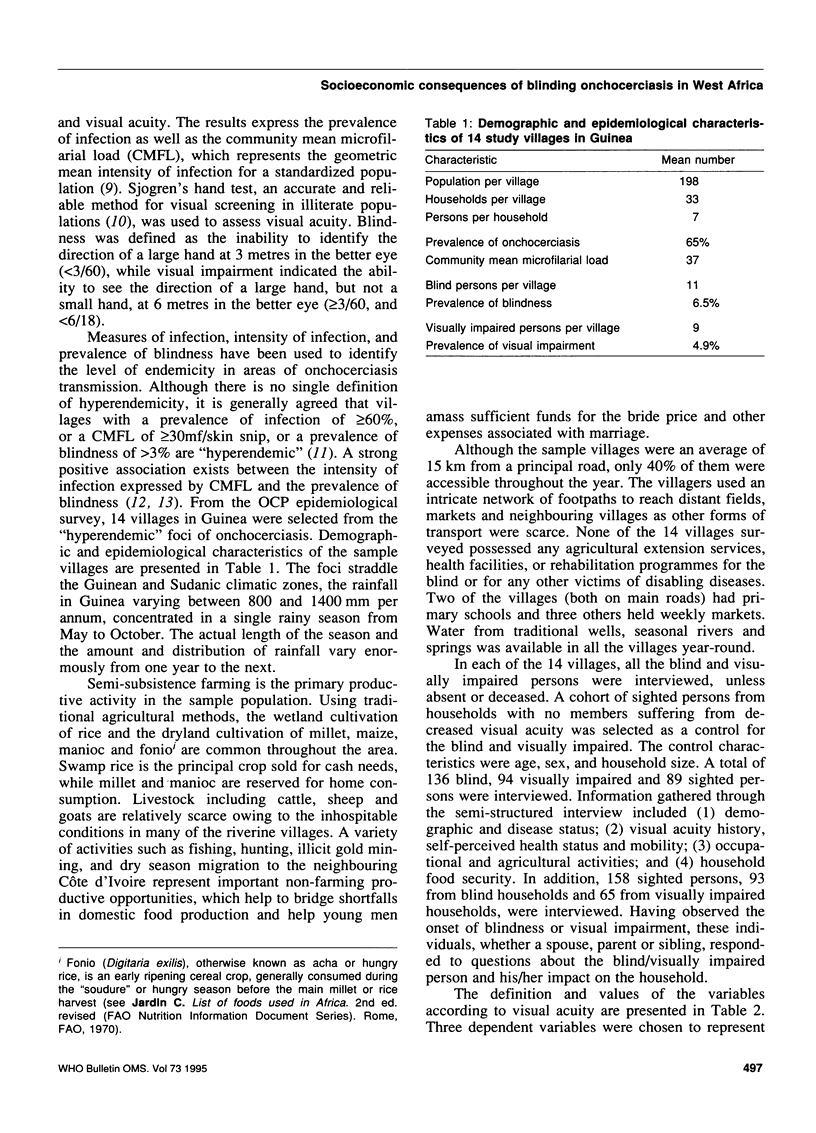
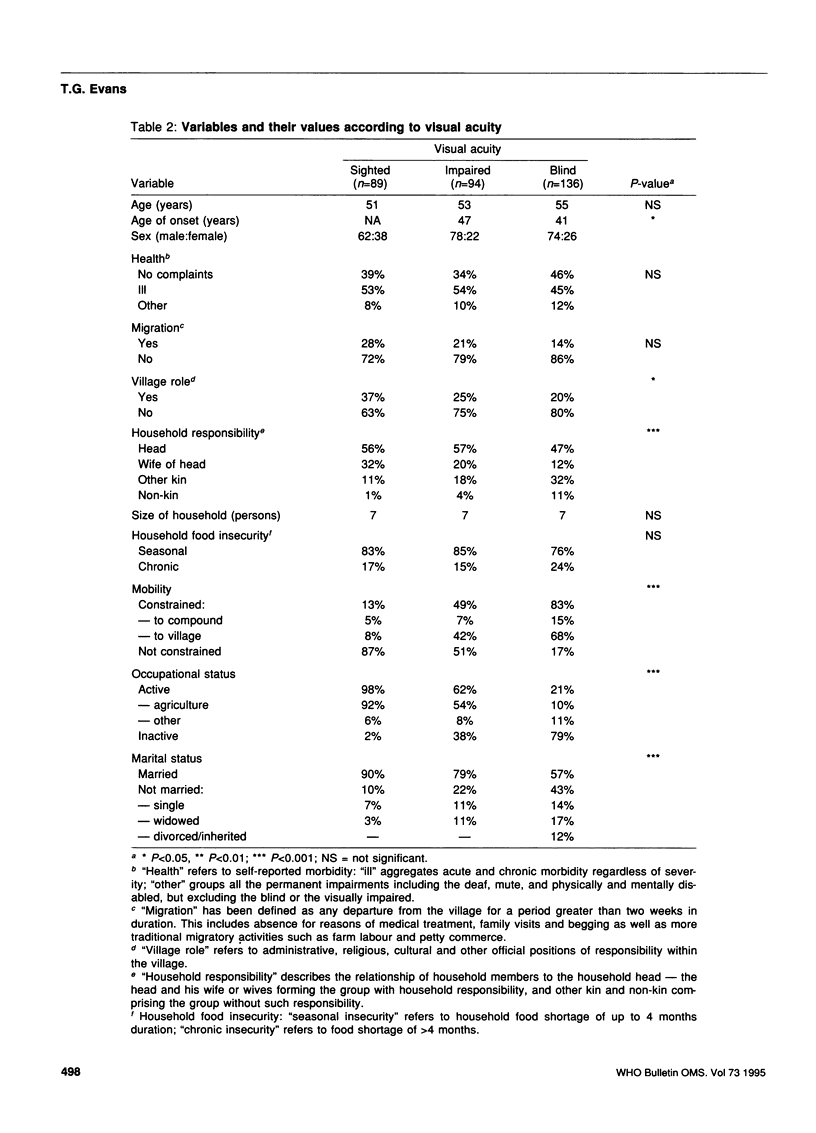
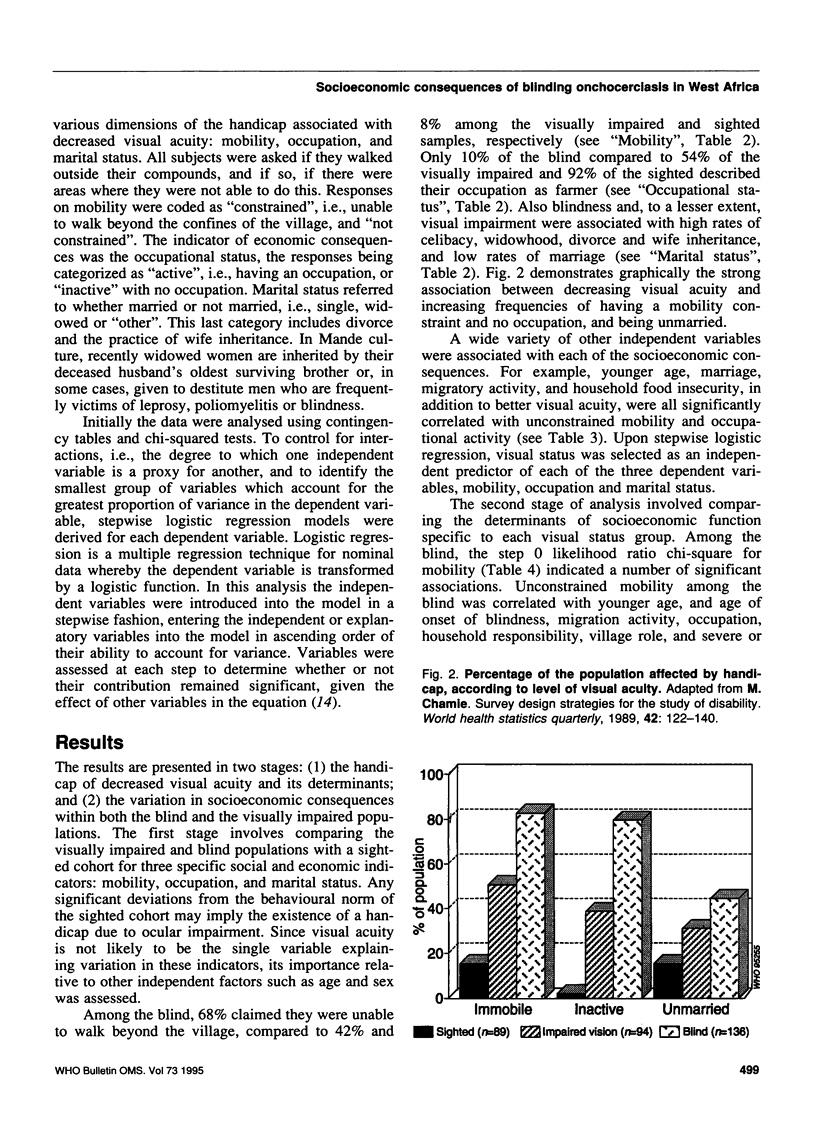
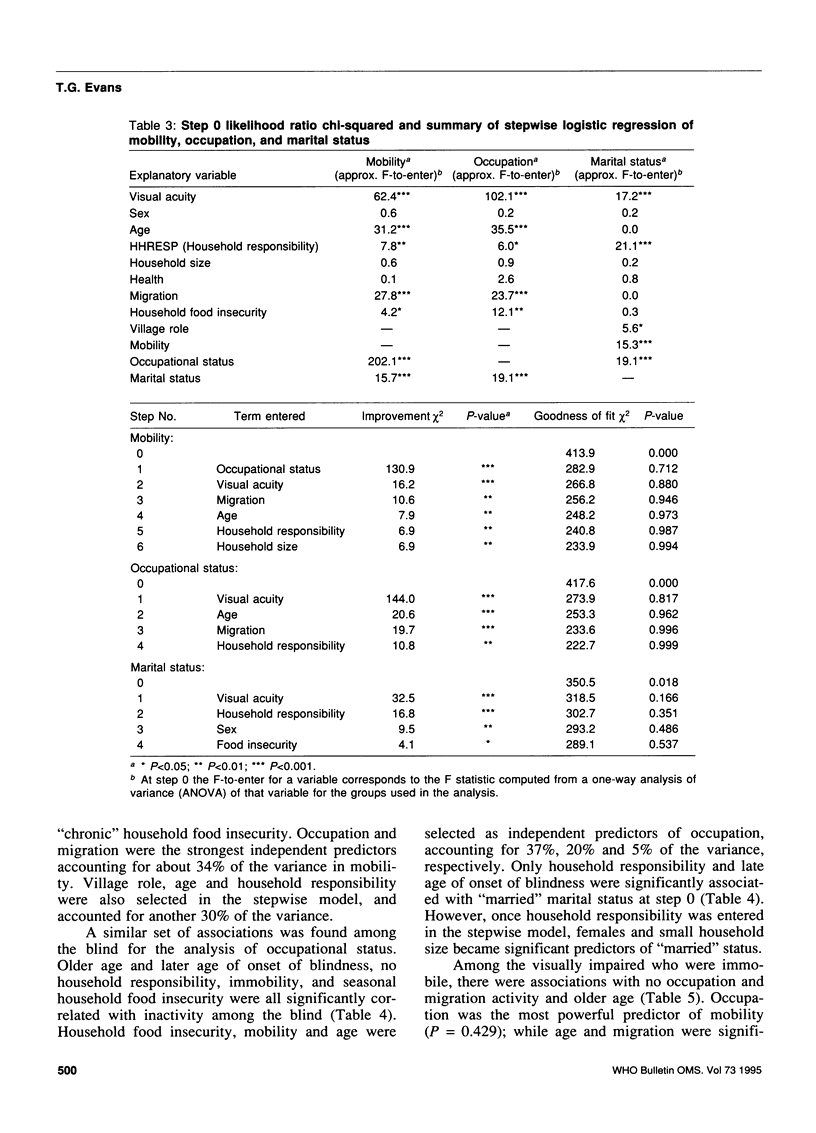
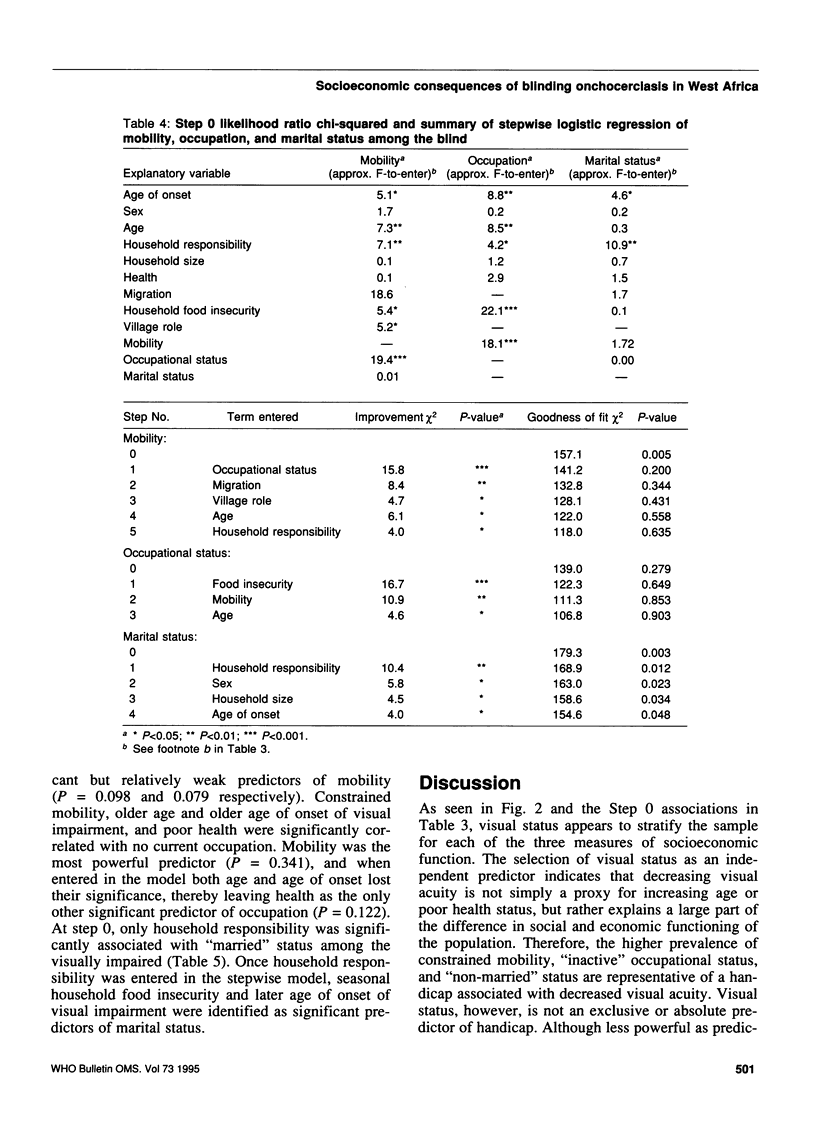
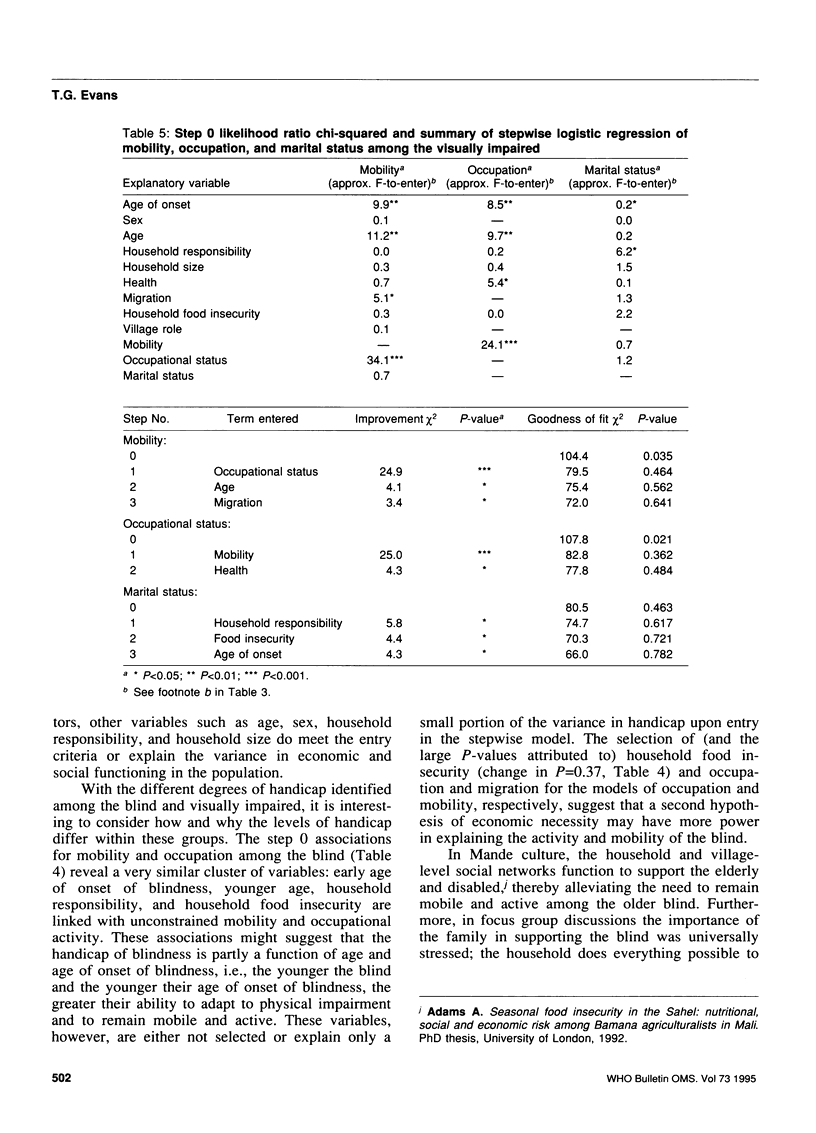
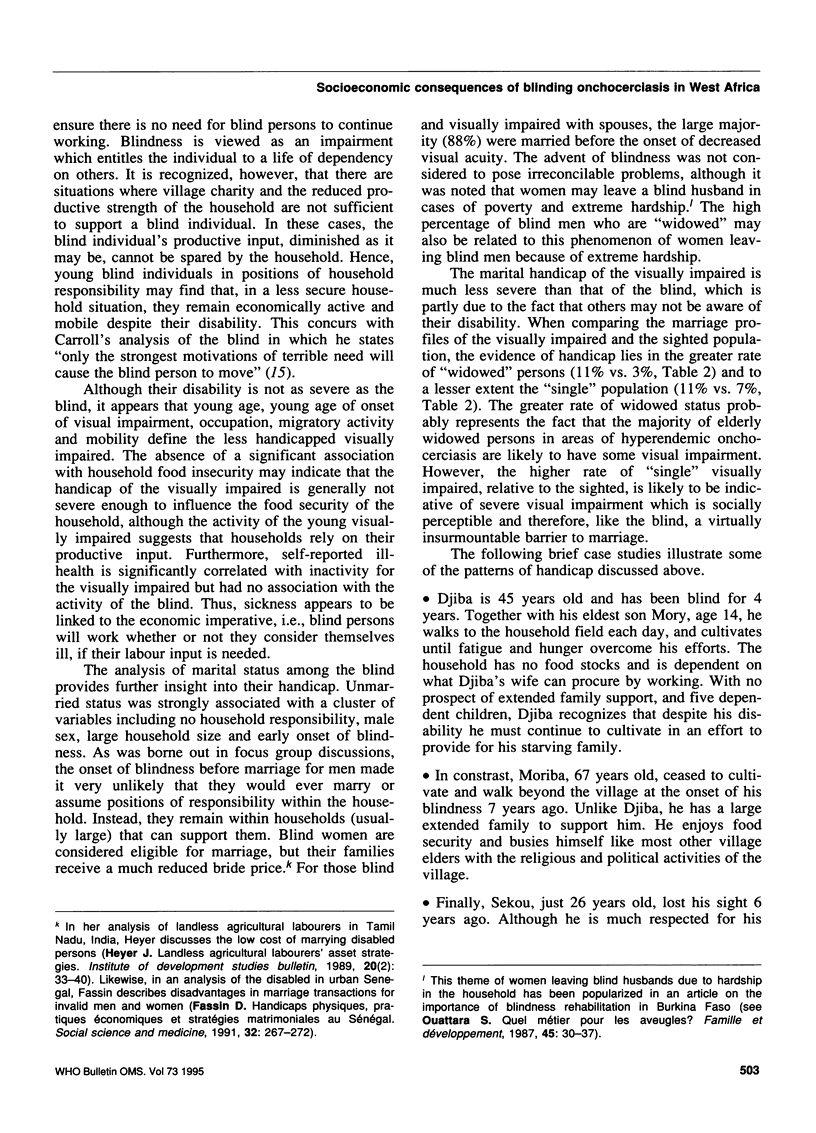
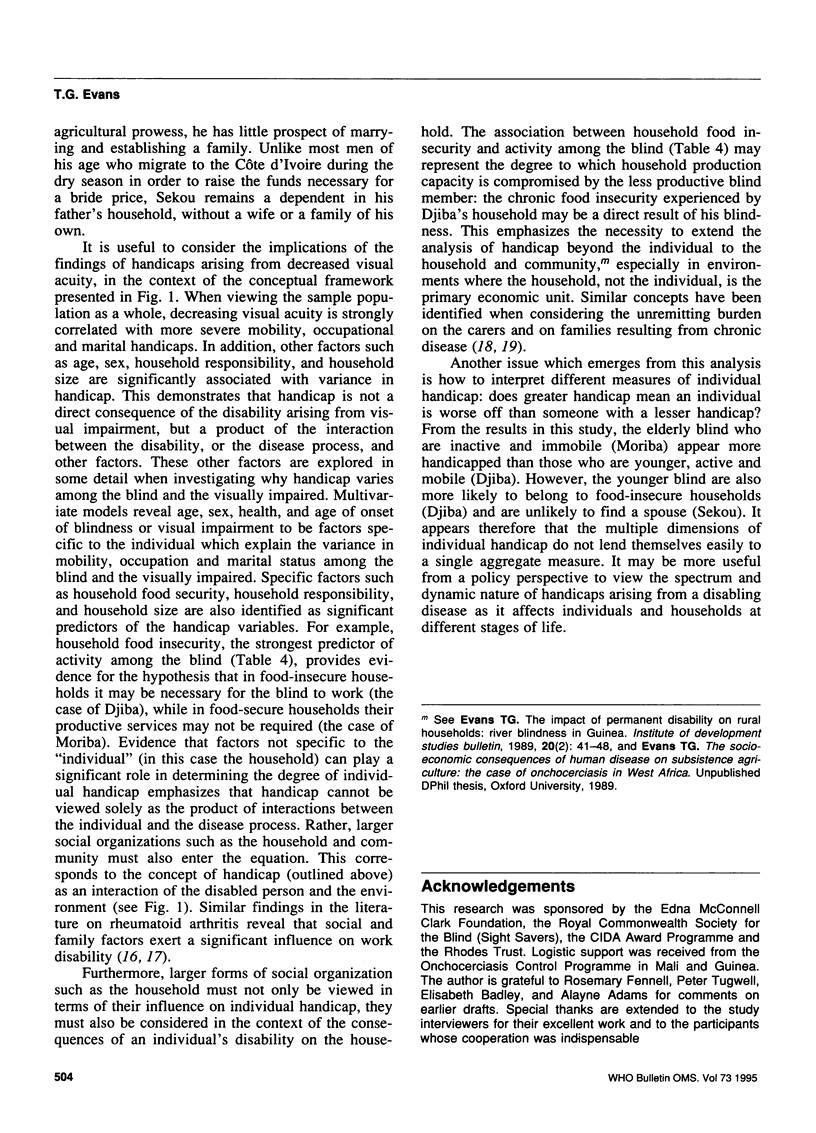

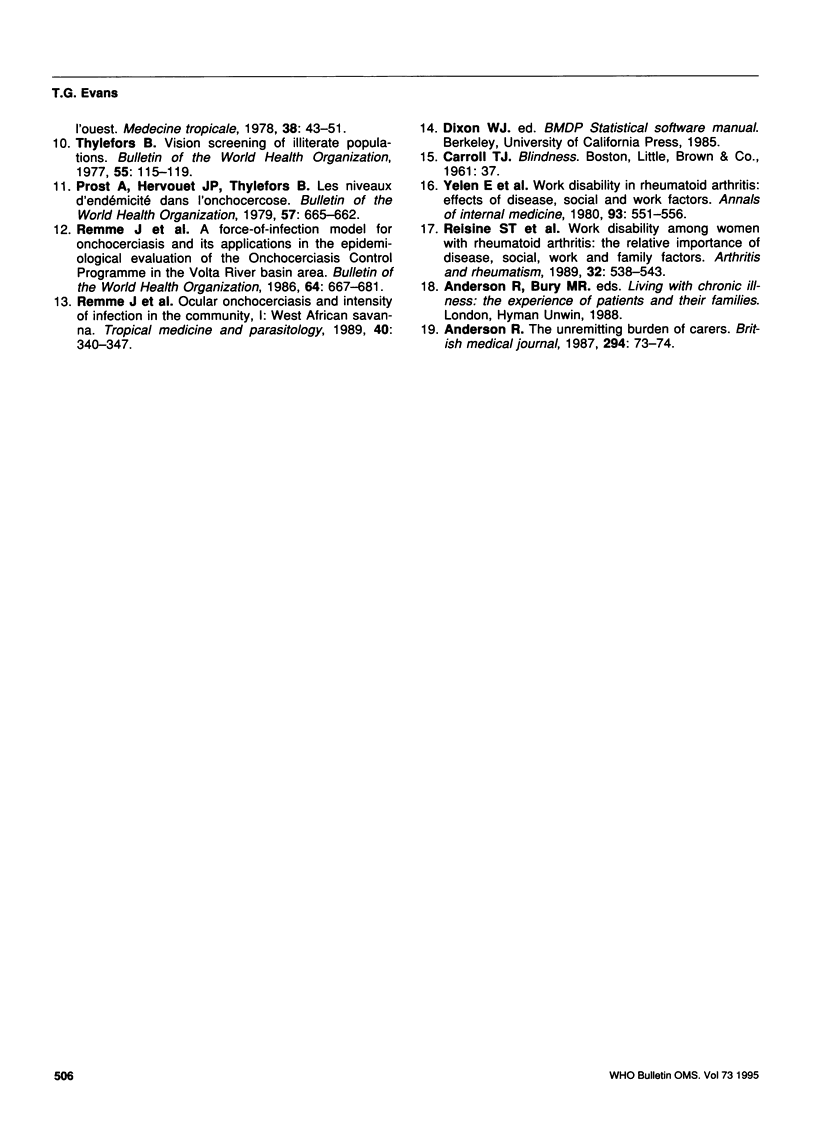
Selected References
These references are in PubMed. This may not be the complete list of references from this article.
- Anderson R. The unremitting burden on carers. Br Med J (Clin Res Ed) 1987 Jan 10;294(6564):73–74. doi: 10.1136/bmj.294.6564.73. [DOI] [PMC free article] [PubMed] [Google Scholar]
- Badley E. M. The ICIDH: format, application in different settings, and distinction between disability and handicap. A critique of papers on the application of the International Classification of Impairments, Disabilities, and Handicaps. Int Disabil Stud. 1987;9(3):122–125. doi: 10.3109/03790798709166338. [DOI] [PubMed] [Google Scholar]
- Chamie M. Survey design strategies for the study of disability. World Health Stat Q. 1989;42(3):122–140. [PubMed] [Google Scholar]
- Chamie M. The status and use of the International Classification of Impairments, Disabilities and Handicaps (ICIDH). World Health Stat Q. 1990;43(4):273–280. [PubMed] [Google Scholar]
- Fassin D. Handicaps physiques, pratiques economiques et strategies matrimoniales au Senegal. Soc Sci Med. 1991;32(3):267–272. doi: 10.1016/0277-9536(91)90103-j. [DOI] [PubMed] [Google Scholar]
- Health J. E., Rhyne R. L. General and family practice: panic disorder. West J Med. 1986 Nov;145(5):681–681. [PMC free article] [PubMed] [Google Scholar]
- LaPlante M. P. The demographics of disability. Milbank Q. 1991;69 (Suppl 1-2):55–77. [PubMed] [Google Scholar]
- Nagi S. Z. An epidemiology of disability among adults in the United States. Milbank Mem Fund Q Health Soc. 1976 Fall;54(4):439–467. [PubMed] [Google Scholar]
- Prost A., Hervouet J. P., Thylefors B. Les niveaux d'endémicité dans l'onchocercose. Bull World Health Organ. 1979;57(4):655–662. [PMC free article] [PubMed] [Google Scholar]
- Remme J., Ba O., Dadzie K. Y., Karam M. A force-of-infection model for onchocerciasis and its applications in the epidemiological evaluation of the Onchocerciasis Control Programme in the Volta River basin area. Bull World Health Organ. 1986;64(5):667–681. [PMC free article] [PubMed] [Google Scholar]
- Remme J., Dadzie K. Y., Rolland A., Thylefors B. Ocular onchocerciasis and intensity of infection in the community. I. West African savanna. Trop Med Parasitol. 1989 Sep;40(3):340–347. [PubMed] [Google Scholar]
- Thylefors B. Vision screening of illiterate populations. Bull World Health Organ. 1977;55(1):115–119. [PMC free article] [PubMed] [Google Scholar]
- Verbrugge L. M. Disability. Rheum Dis Clin North Am. 1990 Aug;16(3):741–761. [PubMed] [Google Scholar]


